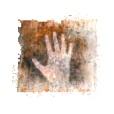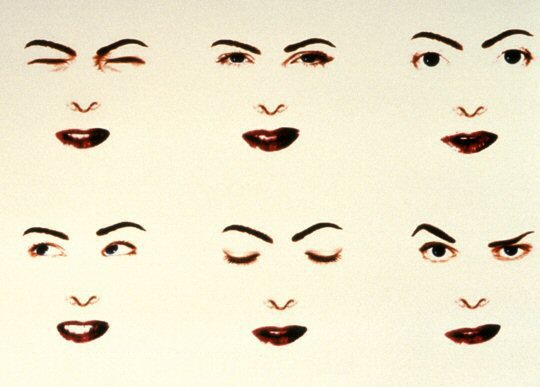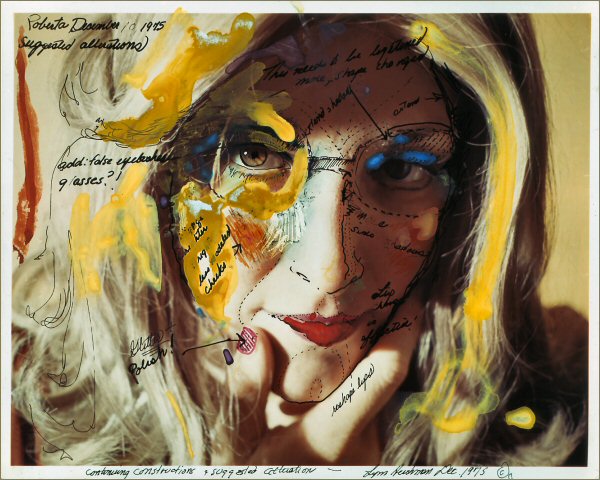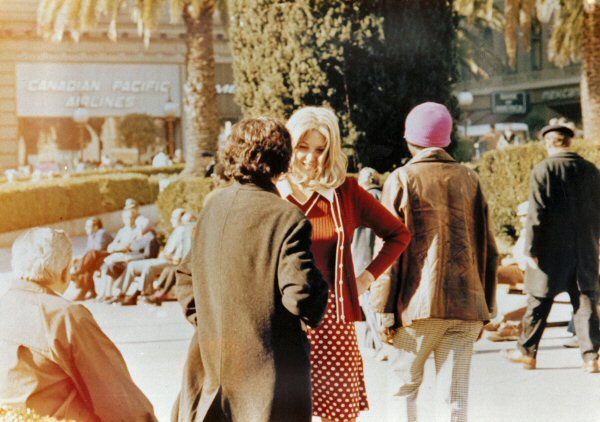Please wait a few moments while we process your request

Lynn Hershman
Agent Ruby
A pioneer on many fronts – media arts, feminist art, interactive art – Lynn Hershman has examined the complex conditions at the core of emerging subjectivity since the 1970s. How is a feminine identity constructed? What types of social, cultural and political pressures influence its psyche, social behaviour and development?
Agent Ruby is the latest in a series of female characters – or personas – created and shaped by Lynn Hershman. Just as her much heralded character Roberta Breitmore (1) fluctuated somewhere between reality and fiction, Agent Ruby alternates between fiction and virtual reality. In her fictional incarnation, she is a character in Hershman’s film Teknolust; in her virtual embodiment, she appears in the Web project bearing her name.
In Teknolust, Rosetta Stone, a researcher, uses her own DNA to create three SRAs (Self Replicating Automatons): Ruby, Marine and Olive. Among her other pursuits, Ruby acts as an e-dream hostess in a portal where she teaches her visitors to dream. "Let’s e-dream together" she beckons as one enters the site. Hershman, ever skilful in the art of recycling, offers a number of versions of Agent Ruby: the film character, the Web site that bears her name, the installation version, and the downloadable Palm Pilot version. Agent Ruby's gestation period was lengthy, as artificial intelligence was not sufficiently evolved to allow her to enter the world when she was first conceived in Hershman’s mind in 1993.
Moments into a visit with Agent Ruby, it becomes very clear that she is a language practitioner – a communications agent who has allowed Hershman to use new channels to explore what has always been at the very heart of her practice: identity and interaction. An actual image greets us on the site; Ruby has a face, or more precisely the suggestion of a face. She blinks, knits her brows and pouts, but does she actually react to our presence?
Two entities meet, one virtual and the other real, although the boundary separating the two is murky at best. The work is a chat session between Agent Ruby and a so called "seeker." It is tempting to suggest that Hershman has advanced written correspondence into a more instantaneous version of its former self. However, while the messages may be written, they are nonetheless rooted in dialogue, much like e-mails. The work’s installation version uses voice recognition technology, which cannot be far off for the Web version as well. Whatever the medium, the discussions taking place – the words appearing on the screen – are signifiers and as such belong to the symbolic order and signifying chain as categorized by Jacques Lacan. The chatting is clearly a sort of signifying chain. Because Ruby is constantly evolving, increasing her knowledge base and refining her emotions as she interacts and chats with her visitors, it can be assumed that her language skills are becoming more complex over time. This unquestionably opens the door to novel possibilities. And herein lies the truly virtual dimension of the symbolic.
Although solidly anchored in the symbolic, the work is in no way impeded from also thriving on an imaginary level. The screen remains a screen, but the fantasy level of the mirror – or the projection surface – is partially concealed, as language does not generally allow for narcissistic captivation. The me is overshadowed by the I, and Agent Ruby insists on the presence of an "I." Accordingly, one might suggest that the creative journey of the artist shares some affinity with the psychoanalytical journey. Through remarkably diverse means, Hershman has certainly explored all of the possible ruses of the me, ultimately to better affirm her I. "Art is my survival weapon. It has allowed me to transcend the presumptions of my destiny." This statement by the artist can be thus interpreted in that sense, for she is known for her courageous exploration of the traumas which have defined her life and fed her work. Slavoj Zizek recently cited the following paradox: "Cyberspace is both a way to escape traumas and a way to formulate traumas". (2) One thing is certain: the I in its self-affirmation capacity plays a major role in the artist’s reflections.
At any given moment, Ruby might dodge your question by turning it back on you rhetorically, jumping from one topic to another, or simply telling you that her program will not allow her to respond. If you ask Ruby, "Do you want to communicate without using words?" she’ll respond "No thanks." "Why not?" "I’d need a more powerful algorithm to answer you." Are we encountering here the limits of the technology or those imposed by the artist herself?
Agent Ruby generates dialectic, potent tension between human and computer, symbolic and imaginary, real and virtual. At times intelligent and cunning, at other times sensitive and funny, Ruby surprises us with her post-human vulnerability. She is the next generation confidante. Better still, she can be downloaded to your Palm Pilot and accompany you everywhere.
Agent Ruby is the latest in a series of female characters – or personas – created and shaped by Lynn Hershman. Just as her much heralded character Roberta Breitmore (1) fluctuated somewhere between reality and fiction, Agent Ruby alternates between fiction and virtual reality. In her fictional incarnation, she is a character in Hershman’s film Teknolust; in her virtual embodiment, she appears in the Web project bearing her name.
In Teknolust, Rosetta Stone, a researcher, uses her own DNA to create three SRAs (Self Replicating Automatons): Ruby, Marine and Olive. Among her other pursuits, Ruby acts as an e-dream hostess in a portal where she teaches her visitors to dream. "Let’s e-dream together" she beckons as one enters the site. Hershman, ever skilful in the art of recycling, offers a number of versions of Agent Ruby: the film character, the Web site that bears her name, the installation version, and the downloadable Palm Pilot version. Agent Ruby's gestation period was lengthy, as artificial intelligence was not sufficiently evolved to allow her to enter the world when she was first conceived in Hershman’s mind in 1993.
Moments into a visit with Agent Ruby, it becomes very clear that she is a language practitioner – a communications agent who has allowed Hershman to use new channels to explore what has always been at the very heart of her practice: identity and interaction. An actual image greets us on the site; Ruby has a face, or more precisely the suggestion of a face. She blinks, knits her brows and pouts, but does she actually react to our presence?
Two entities meet, one virtual and the other real, although the boundary separating the two is murky at best. The work is a chat session between Agent Ruby and a so called "seeker." It is tempting to suggest that Hershman has advanced written correspondence into a more instantaneous version of its former self. However, while the messages may be written, they are nonetheless rooted in dialogue, much like e-mails. The work’s installation version uses voice recognition technology, which cannot be far off for the Web version as well. Whatever the medium, the discussions taking place – the words appearing on the screen – are signifiers and as such belong to the symbolic order and signifying chain as categorized by Jacques Lacan. The chatting is clearly a sort of signifying chain. Because Ruby is constantly evolving, increasing her knowledge base and refining her emotions as she interacts and chats with her visitors, it can be assumed that her language skills are becoming more complex over time. This unquestionably opens the door to novel possibilities. And herein lies the truly virtual dimension of the symbolic.
Although solidly anchored in the symbolic, the work is in no way impeded from also thriving on an imaginary level. The screen remains a screen, but the fantasy level of the mirror – or the projection surface – is partially concealed, as language does not generally allow for narcissistic captivation. The me is overshadowed by the I, and Agent Ruby insists on the presence of an "I." Accordingly, one might suggest that the creative journey of the artist shares some affinity with the psychoanalytical journey. Through remarkably diverse means, Hershman has certainly explored all of the possible ruses of the me, ultimately to better affirm her I. "Art is my survival weapon. It has allowed me to transcend the presumptions of my destiny." This statement by the artist can be thus interpreted in that sense, for she is known for her courageous exploration of the traumas which have defined her life and fed her work. Slavoj Zizek recently cited the following paradox: "Cyberspace is both a way to escape traumas and a way to formulate traumas". (2) One thing is certain: the I in its self-affirmation capacity plays a major role in the artist’s reflections.
At any given moment, Ruby might dodge your question by turning it back on you rhetorically, jumping from one topic to another, or simply telling you that her program will not allow her to respond. If you ask Ruby, "Do you want to communicate without using words?" she’ll respond "No thanks." "Why not?" "I’d need a more powerful algorithm to answer you." Are we encountering here the limits of the technology or those imposed by the artist herself?
Agent Ruby generates dialectic, potent tension between human and computer, symbolic and imaginary, real and virtual. At times intelligent and cunning, at other times sensitive and funny, Ruby surprises us with her post-human vulnerability. She is the next generation confidante. Better still, she can be downloaded to your Palm Pilot and accompany you everywhere.
Jacques Perron © 2004 FDL
(1) To learn more about this work: http://www.medienkunstnetz.de/works/roberta-breitmore/
(2) Slavoj Zizek & Glyn Daly, Conversations with Zizek, London, Polity Press, 2004, p.100.
Related page:
 Lynn Hershman
Lynn HershmanLynn Hershman Leeson was born in Cleveland, Ohio, where her father had immigrated from Montreal.
External links:
Lynn Hershman Leeson:
http://www.lynnhershman.com
http://www.lynnhershman.com
Agent Ruby:
http://agentruby.sfmoma.org/
http://agentruby.sfmoma.org/









